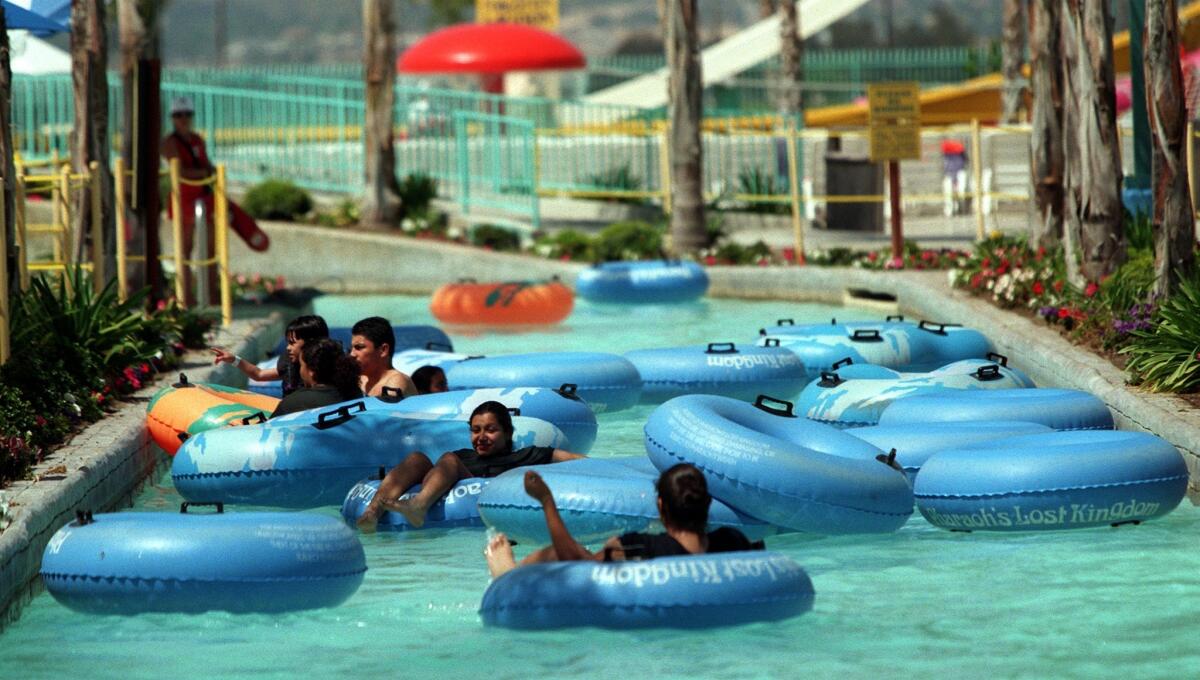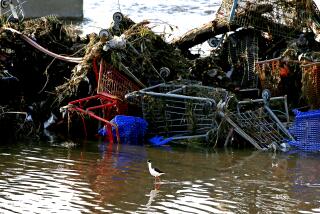CDC study: Nearly 8 in 10 public swimming pools failed routine safety inspections

- Share via
Summer’s right around the corner, and the Centers for Disease Control and Prevention are here to remind you that there’s nothing like a dip in a public pool — a place where you might encounter tiny bits of fecal matter, parasites like Cryptosporidium and volatile chemicals that can irritate your eyes or respiratory tract.
A report published Thursday warns that nearly 8 in 10 routine inspections of public pools turned up at least one violation of safety rules. In addition, about 1 in 8 of these inspections found problems so serious that the pool had to be closed immediately.
These disheartening statistics are based on 84,187 routine inspections of 48,632 public pools and other “aquatic venues” in Arizona, California, Florida, New York and Texas. Researchers focused on these five states because they are home to 40% of the nation’s estimated 309,000 public water play facilities.
See the most-read stories in Science this hour >>
The CDC created the Network for Aquatic Facility Inspection and Surveillance in 2013 to keep tabs on the safety of public pools. In the preceding 35 years, 650 outbreaks originating in public pools were reported to the federal agency. The largest of these happened at an indoor water park resort in Ohio in 2007, when chlorine mixed with sweat and urine in pool water to create chemicals called chloramines. Local health authorities tallied 665 cases of eye and respiratory tract problems among resort patrons and lifeguards.
None of this is to say that Americans would be better off if they stayed away from public pools. On the contrary, swimming and other “water-based physical activity improves physical and mental health,” Michele C. Hlavsa of the CDC’s Division of Foodborne, Waterborne, and Environmental Diseases and her collaborators wrote in the new report, which appears in the Morbidity and Mortality Weekly Report. What’s more, they added, water-based exercise might be the only option for people with certain medical conditions.
Besides, swimming is a hugely popular pastime in this country. According to the Census Bureau, more than 50 million Americans over the age of 6 went swimming at least six times a year. So if public pools — at water parks, hotels, summer camps, apartment buildings, fitness clubs or municipal recreation facilities — aren’t safe, a lot of people could suffer the consequences.
This is what prompted the CDC, along with the New York State Department of Health, to develop the Model Aquatic Health Code. Hlavsa and her coauthors set out to test how well the nation’s five biggest public pool states were measuring up to the code.
Here’s some of what they found:
* 79% of routine inspections turned up at least one code violation.
* The number of violations per inspection ranged from 0 to 21; the median number of violations was 2.
* 12% of routine inspections found a violation that resulted in the immediate closure of the facility.
* Among the most common violations were problems with a pool’s pH level (seen in 15% of routine inspections); problems with safety equipment (13%); and problems with the concentration of disinfectants (12%).
The nearly 50,000 pools included in the analysis aren’t necessarily a representative sample of public pools throughout the country. That means the results reported by the CDC can’t be generalized to all states or venues, the study authors cautioned. Even among the five pool-heavy states that participated in the study, some counties shared more inspection records than others.
Despite these limitations,“the findings of this report underscore the need to improve the operation and maintenance of U.S. public aquatic facilities to prevent illness and injury,” the study authors concluded.
And that’s just for the pools that got inspections. Consider this: “Currently, only 68% of U.S. local public health agencies regulate, inspect, or license public aquatic facilities.”
So what’s a swimmer to do? The CDC’s advice is to visit a pool supply or hardware store and stock up on test strips that can measure the pH and disinfectants in the water. A healthy pool has a pH between 7.2 and 7.8. The concentration of chlorine should be at least 1 part per million in regular pool water and at least 3 ppm in a hot tub. For bromine, the concentration in pool water should be at least 3 ppm, and at least 4 ppm in a hot tub.
Follow me on Twitter @LATkarenkaplan and “like” Los Angeles Times Science & Health on Facebook.
ALSO
Exercising drives down risk for 13 cancers, research shows
Despite autism fears, here’s why pregnant women should keep taking their prenatal vitamins







